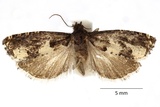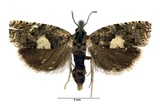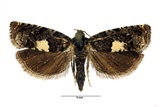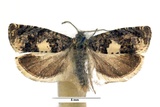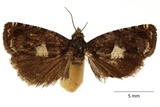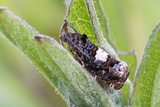Epiblema scutulana ([Denis & Schiffermüller], 1775) Species
Last modified: Nov. 23, 2025, 6:15 p.m.
A widespread but rare species in Belgium.
Details
- Classification
- Family: Tortricidae > Subfamily: Olethreutinae > Tribus: Eucosmini > Genus: Epiblema > Species: Epiblema scutulana
- Vernacular names
- Distelzadelmot (NL), Thistle Bell, Thistle Root-borer (EN), Kratzdistelwickler (DE)
- Synonyms
- Epiblema luctuosana (Duponchel, 1836) and Epiblema cirsiana sensu auct., nec (Zeller, 1843)
- First mention in Belgium
- De Sélys-Longchamps E. 1844. Énumération des insectes Lépidoptères de la Belgique. — Mémoires de la Société royale des Sciences de Liége 2: 1–35. On page 21 (as Ephippiphora luctuosana Dup.). view page
- Status
-
Native
Distribution
Imago
Wingspan 18–23 mm. Males are distinct in having a large white torno-apical blotch, large white medio-dorsal blotch, and grey hindwing.
Females require genital dissection to distinguish from Epiblema cirsiana and Epiblema sticticana.
The hind wings of the males of Epiblema scutulana are mostly white, while those of the males of Epiblema cirsiana are completely dark.
Bionomics
The larva lives in the roots and the stem on the host plant where it hibernates in the larval habitation. Pupation takes place in the upper part of the larval mine.
During the day, the adults rest on the larval foodplant, where they resemble a bird-dropping. They are active at dusk and come to light.
Flight periods
The adults have been observed from April till September.
Observed on
- Host plant (species):
- Carduus nutans, Cirsium vulgare and Cirsium palustre
- Host plant (genera):
- Carlina
The larva lives on Carduus nutans, Cirsium vulgare, Cirsium palustre and Carlina.
Habitat
It is generally assumed that this species is more associated with fairly open and dry habitats, such as rough grounds, open woodland, roadside verges, and wasteland.
